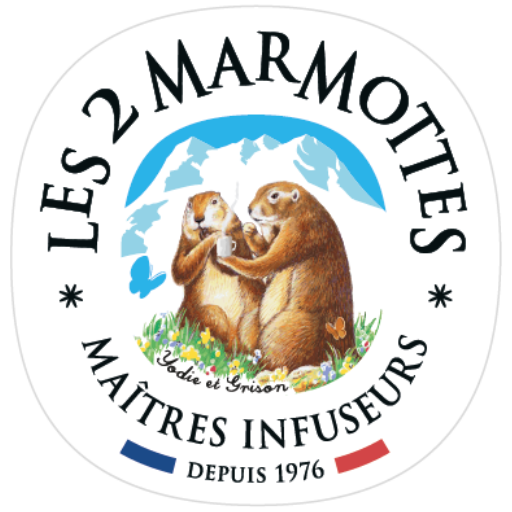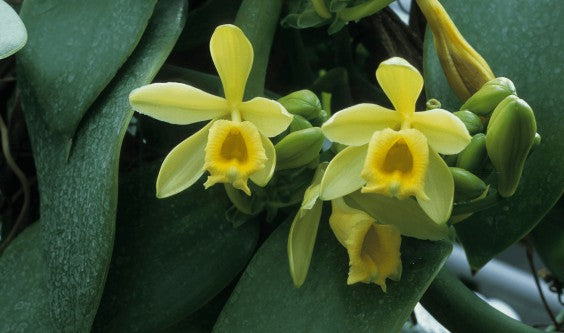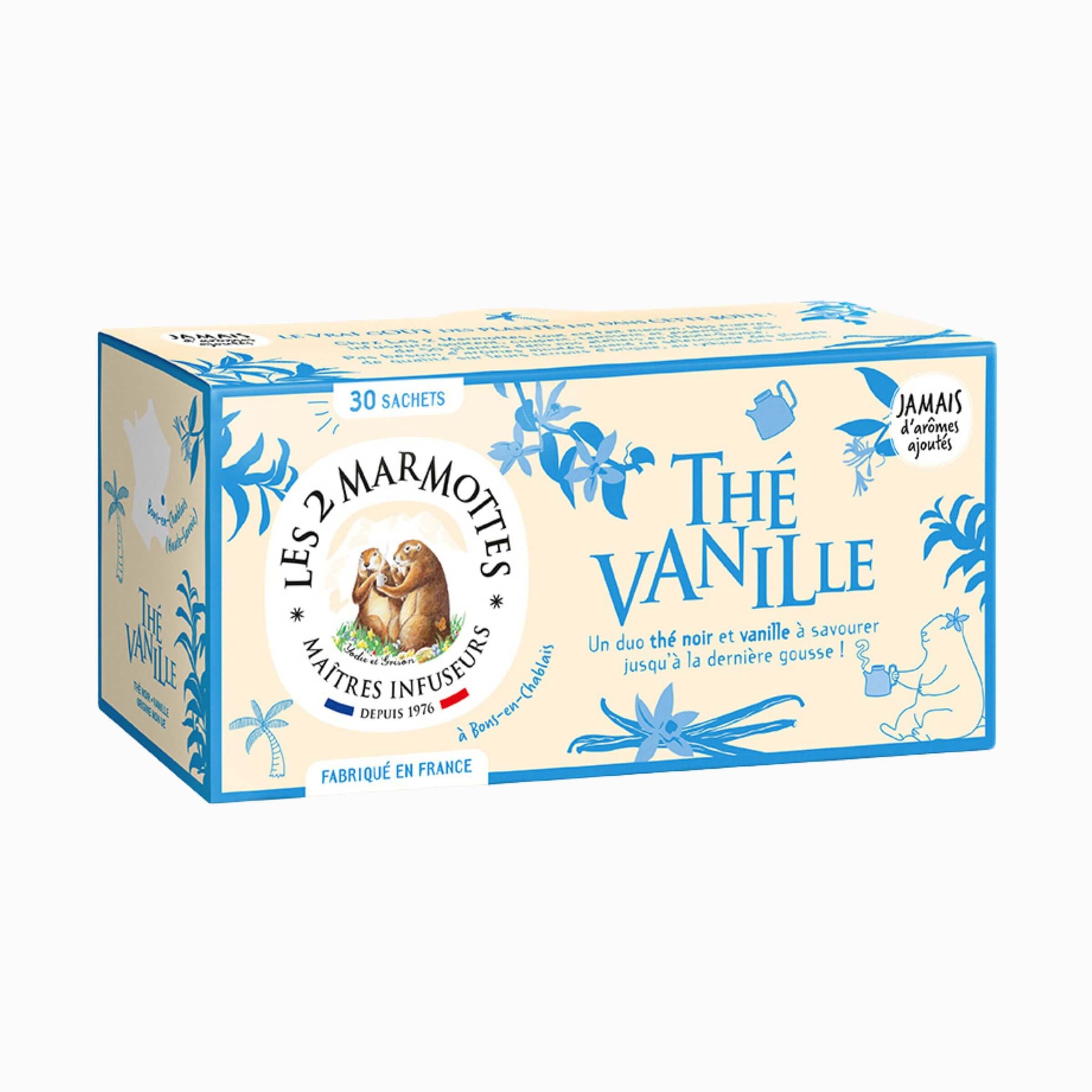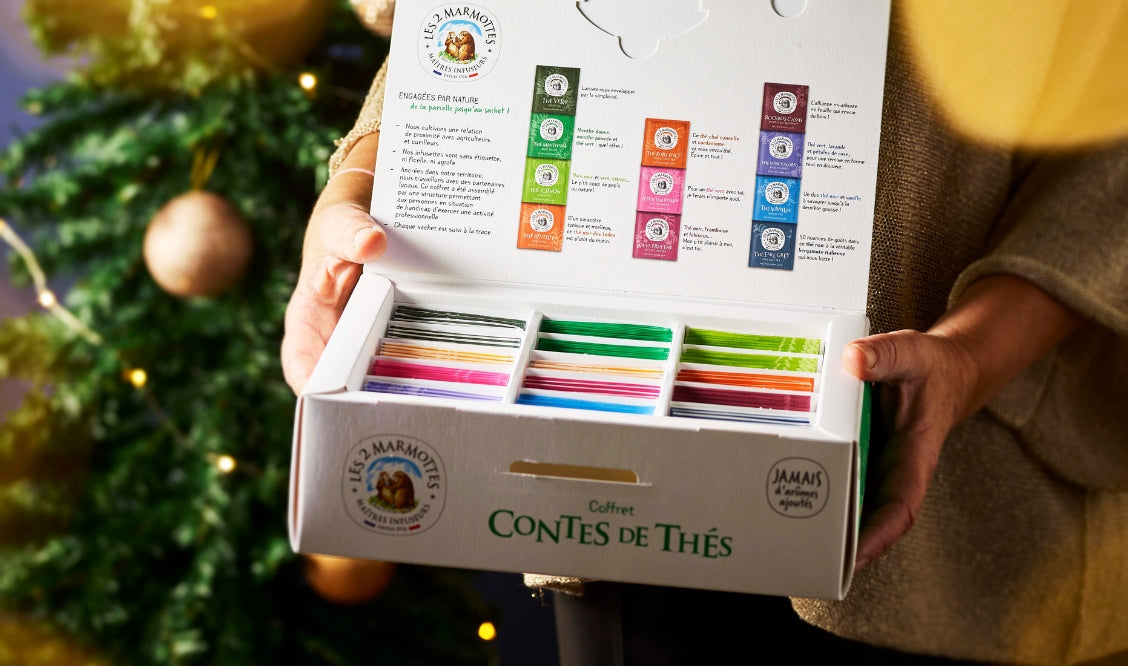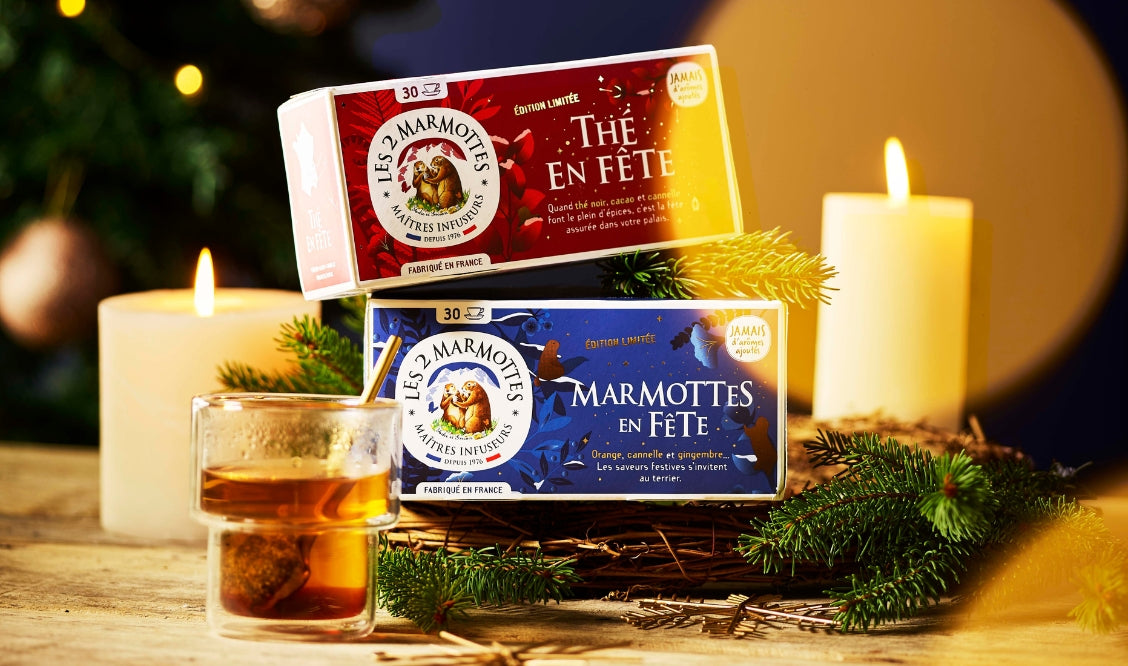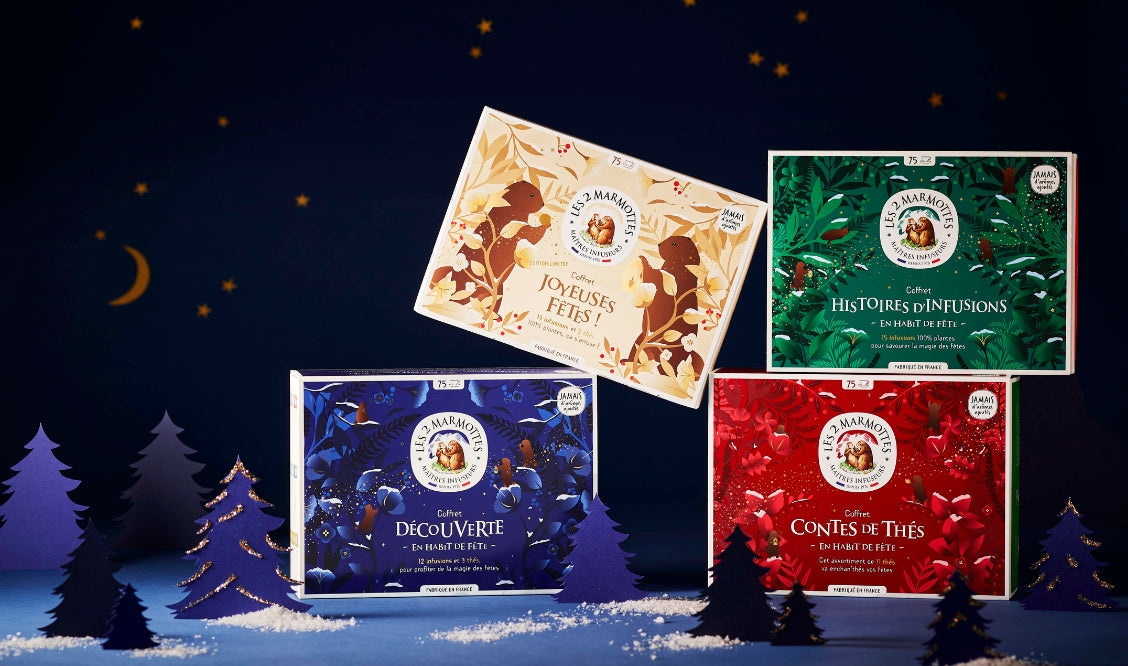Vanilla galore sometimes means flavors galore. At Les 2 Marmottes, we focus on real vanilla, the kind whose pods grow under the Madagascar sun!
Where does vanilla come from?
Before taking you into the (in our opinion, not exactly wonderful) world of vanilla aromas, we wanted to give you a quick reminder about real vanilla pods .
Vanilla pods are the fruit of an orchid whose Latin name is Vanilla planifolia, or Vanilla tahitensis depending on the species.
They naturally contain vanillin and other complex aromatic molecules, which gives them a rich, deep and extremely delicious taste! Enough to make you want to use them in all desserts, and also to make vanilla drinks by combining them with tea or rooibos .
To get the vanilla flavor, we think the easiest way is obviously to harvest the pods and use them as is after drying. Except that in real life, it doesn't always happen like that!
Vanilla is a spice that takes a long time to cultivate and is difficult to harvest, and therefore expensive. At the same time, it's so popular with consumers young and old that we need to put it everywhere.
Manufacturers have been racking their brains in every direction trying to imitate the flavor of vanilla, at a lower cost and to produce larger volumes. The aromatic richness of the substitute will depend on the type of ingredient used.
How do you know if you're dealing with "real" vanilla?
The good news for consumers is that labels must list ingredients.
This is where you can find terms such as "vanilla", "vanilla extract", "natural vanilla flavoring", "vanilla flavoring", etc.
Legal statutes regulate each of these appellations.
Find the exact label, and you'll know if your tea contains real vanilla or a substitute!
So, in all these names, what does it mean? What is the difference between vanilla and vanilla flavoring?
"Vanillin"
Vanillin is one of the molecules found in vanilla beans (an aromatic aldehyde, as it's known), although it's not the only one that contributes to the spice's flavor. On its own, it's less rich and complex than the flavor of a whole bean, but it's easily recognizable and easy to make.
The vanillin molecule can be extracted from the vanilla bean, or it can be synthesized entirely from other materials, in which case it is chemically pure.
In everyday language, we often wrongly speak of "vanillin" to designate any flavoring imitating vanilla, but depending on the industrial process chosen, vanillin can be a natural flavoring or a synthetic flavoring (we'll get to that).
"Natural vanilla extract"
It is a flavoring preparation made from 100% vanilla pods. It is obtained by infusing the pods in a solvent (usually a hydroalcoholic solution). Then it is collected and concentrated to obtain the final extract, which is used diluted.
"Natural vanilla flavoring" (yes, the "of" is important)
It is also extracted from the vanilla pod, but can also be supplemented with extracts of other natural raw materials containing vanillin, in a maximum proportion of 5%. Yes, because even if it is not intuitive given its name, the vanillin molecule can be found elsewhere than in vanilla pods.
"Natural vanilla flavor" (without the "de")
We're once again looking at extraction from natural raw materials, but this time it's no longer the vanilla pod. Manufacturers have looked to nature for something that's closer to vanilla. In this category of flavors, we can find flavors from rice, turmeric , or cloves , which contain molecules similar to vanillin. At one time, we could even use castoreum, an extract of secretions from the anal glands of our distant cousin the beaver (unbelievable but true).
On the other hand, no trace of real vanilla pod!
"The vanilla aroma"
It is a synthetically obtained aroma, composed in a laboratory.
It is chemically manufactured from various raw materials, not necessarily natural.
For example, we can find vanillin (the molecule we talked about above, naturally present in vanilla pods) synthesized from wood, thanks to lignin which can be recovered via by-products of the paper industry), or even a petroleum derivative.
So it's a vanilla flavor obtained completely artificially. We're a long way from the original pod!
Bonus: “Exhausted Vanilla”
It is not a flavoring, but you may sometimes encounter it in the ingredient list alongside various vanilla flavors.
As its name suggests, this is a vanilla pod that has already been used (to make an extract or an infusion) and is therefore "emptied" of its organoleptic qualities. Hence the name "exhausted" vanilla.
It is no longer of interest in terms of taste, but its pretty black grains have an aesthetic and cosmetic impact in cooking in preparations such as ice creams, creams, flans, etc.
What is "Bourbon" vanilla?
A thousand miles from the aromas above, in the family of “true vanillas”, we find Bourbon Vanilla.
This name is given to Vanilla planifolia type vanilla produced in the Indian Ocean, near Réunion (which was formerly called "Bourbon Island"), Mayotte, the Comoros, Mauritius and Madagascar, and whose preparation (steaming, drying, etc.) corresponds to a specific technique.
Naturally rich in vanillin molecules, this vanilla is very fragrant, which explains why it immediately caught the eye of our master brewers !
On the palate, they weren't disappointed by the trip either: its intense, sweet, and slightly caramelized aromas immediately inspired them! Hop, adopted for making the terrier's organic vanilla tea !
"Vanilla remember I'm nothing without you"
It is therefore with Bourbon Vanilla from Madagascar that our Master Infusers have developed their famous recipe for Organic Vanilla Black Tea .
Now that you know how to decipher the ingredient list, you'll see that this vanilla tea contains... vanilla! 0 flavoring, 0 extract, just a hint of rooibos and a tiny bit of stevia leaf that enrich it and allow it to unfold its generous flavor.
In your cup of organic tea from Les 2 Marmottes, you will have the chance to rediscover the naturally delicious taste of finely cut vanilla pods and all the artisanal know-how of Malagasy producers!
And yes, we can leave our Haute-Savoie to venture towards other regions but we will always remain and "pod that pod" faithful to our values: 100% plant recipes, without added flavors , without essential oils and without strange aromas.
